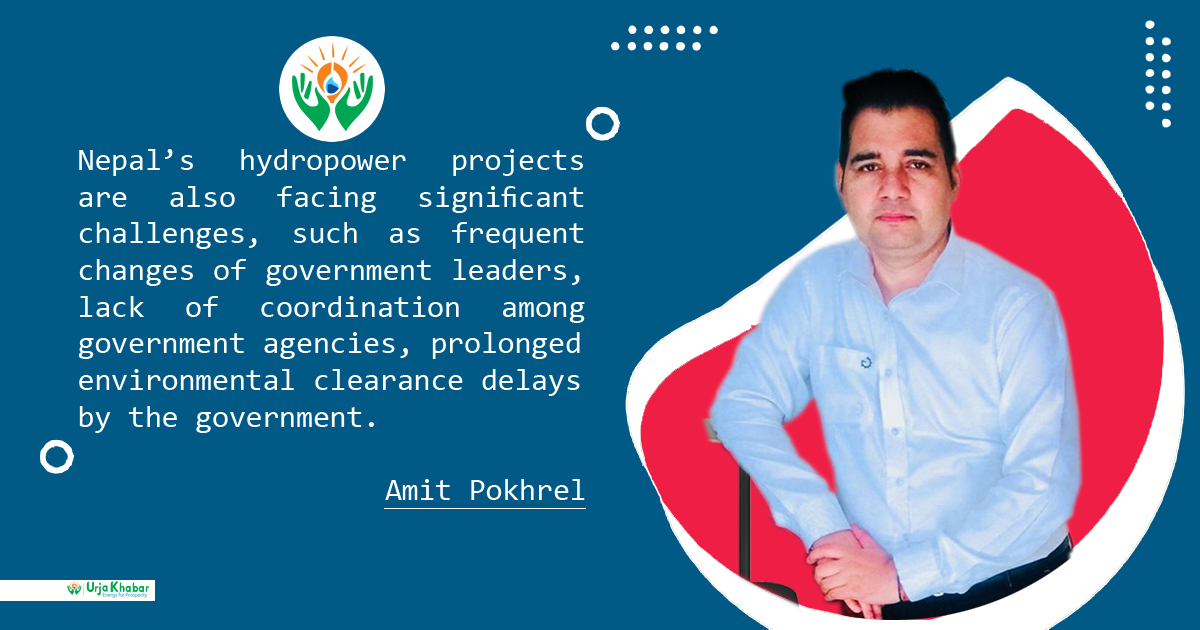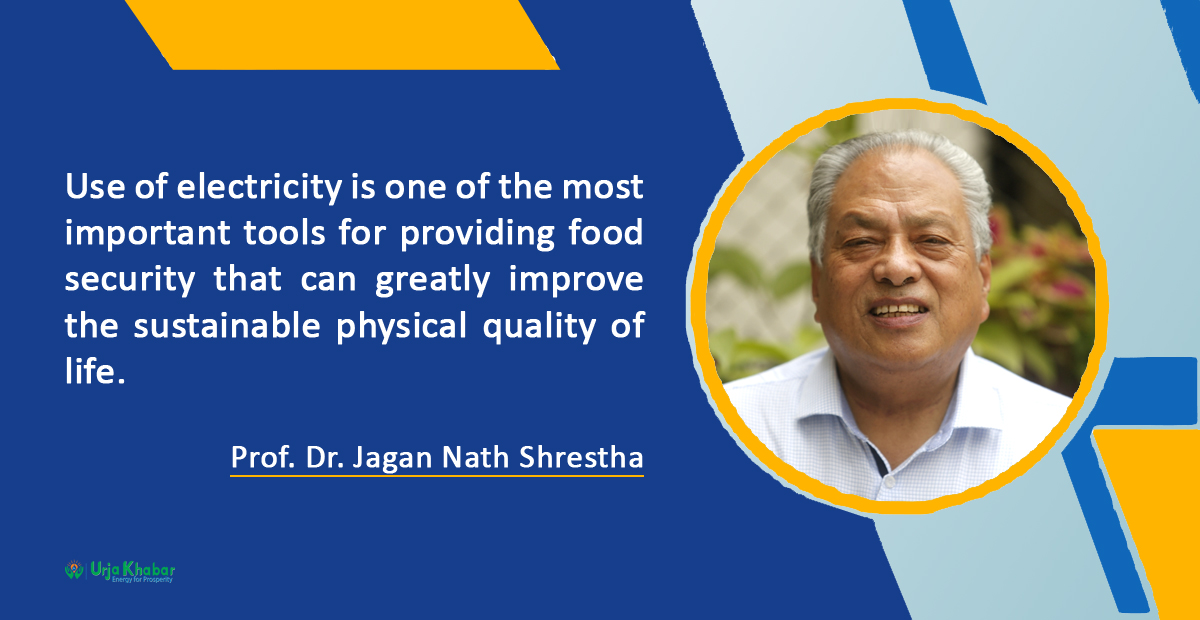Energy Update
Net Zero Carbon, Emission-An Amos* Roadmap
.jpg)
Climate Change Mitigation, Energy Security & Net Zero Targets have been driving countries across the World to pursue renewable sources of energy. India aims to become a net-zero economy by the Year 2070 and has set a target of installing a non-fossil energy capacity of 500 GW by the Year 2030. India also targets meeting 50 percent of its electricity requirements by the Year 2030 through its renewable energy resources. Solar is the dominant renewable source and accounts for 13.2 percent of India’s total installed power capacity as of March 2022. Wind installations account for 10.1 percent, while biomass caters for 2.6 percent.
By virtue of our organization’s deep insights into the Renewable Energy Domain, we completely focus on achieving our above mentioned national target. Accordingly, our state-of-the-art AI and ML based *Asset Monitoring & Optimisation Solution (AMOS) endeavors are critical contributions in digitally transforming the RE Analytics & Monitoring of the PAN India RE Sites for optimizing and promoting RE Integration into the National Grid with desired stability. With a focus on Solar Energy, as an average PR achieved at the site ranges from somewhere around 70 percent to 80 percent, a lot of intelligence is incorporated through Artificial Intelligence in Renewable Energy Solar Domain to undertake Root Cause Analysis (RCA) for splitting the losses and categorizing the losses. Such Deep Learning works upon mitigation through O&M and retrofit (both classified as Recoverable Losses approx. 10 percent) & analysis to Initial Design basis (classified as Non-Recoverable Losses) through Underperforming Strings, Vegetation Shading, Snow Coverage, PV Module Soiling, Tracker Misalignment, Module Mismatch, Annual Module Degradation, Light Induced Degradation (LID) Module Degradation, High Cell Temperature, Inverter Conversion Losses, Power Factor Operation, Inverter Clipping, Far Field, Fixed Shading/Near Fixed Shading, Albedo Reflection, AC Wire Loss, DC Wire Loss and Transformer Losses. This is critical to Asset Optimization and its health.

It is imperative to understand the realm of Advance Analytics & its requirements for Renewable Energy Integration as the uncertainties associated with Weather in connection to its impact on Renewable Energy Generation requires to be logically interpreted for its safe and stable availability to a Nation’s National Grid. Hence, the conceptualization of the model for the respective portfolio has to be based on the effective identification of underperforming assets with the losses being broken and analyzed in detail (both for reason and impact) with the adequate scope of their prediction & forecasting. Similarly, our SMEs are continuously working through their Deep Learning Techniques for enabling the relevant RCAs to achieve immense par excellence intelligence to identify corrective action and recoverable production (based on the analysis of all losses) when compared with Actual Production.
With the customized season, date, year, etc. analysis through various waterfalls integrated through their fuzzy logic and algorithms, the transparency of Site Data into meaningful quick Decision Making Enablers (based on the requirement of granularity in projection) is ensured. Thus, the Underperformance is measured through the Model Algorithm’s gap analysis with the Actual, i.e. What the Model Expects, What is actually seen on the Asset and thereafter to what level the model is corrected. Specific Losses which are highlighted for relevant checks & balances include DC Side Losses, AC Side Losses, Soiling Loss, Shading Loss and Clipping Loss. It is highlighted that the Clipping Loss Model Estimation in areas of the cloud is tricky as the PV Syst Model reports hourly whilst the Cloud Cover moves within minutes over the given area. Hence, the model formulation of Clipping Loss basis PV Syst estimation is highly debatable. On a similar ground, Shading Loss Model is extremely complicated in a terrain site as incredible shading losses are observed. Hence, it is very important that specific models of estimation based on the data set available are accurately formulated and the Model Gap Analysis is frequently undertaken to adjust the model for accurate analytical intelligence. Universal IEC Standards/GAD Standards/ Organisational Standards are to be taken for analysis for their acceptability of the Standard adopted in the Solution Calculation. Thus, there lies a huge potential in the utilization of solutions akin to ours for achieving RE Integration for Power Requirements across the Globe.

In the realm of the said requirement, a well-thought-out procedure with the undermentioned is implemented with Raw SCADA data, for each Inverter/ WTG, processed to calculate monthly net production data. For each piece of equipment, quality control and assigning SCADA data into performance categories is undertaken. Normal, under-performance, and unavailable criteria are formulated with a reference power curve/ Heat Map for each piece of equipment from SCADA data flagged as normal. A fair estimation of equipment availability and equipment performance with monthly energy availability calculation (inclusive of under-performance using categorized performance data) is undertaken. This establishes historic performance with all normalized or "gross up", monthly net production data, accounting for energy availability, etc. being created towards a series of monthly potential net energy calculation equipment-wise.
Efforts are concerted towards developing a long-term index, and performance model, using concurrent weather datasets (e.g. ERA5, MERRA-2, reference data co-related to the gross production data) extensively. It is imperative to determine the long-term reference period based on long-term trends of reference ERA5 and MERRA-2 data. The methodology focuses on generating an energy index from a long-term ensemble of reference data.
Additional filtering of monthly net potential energy is also performed to filter anomalous periods of resource and periods of excessively low availability. Once we establish and correlate the relationship between filtered, potential generation data, and long-term energy index. This creates a long-term estimate of potential generation. Estimates of electrical losses by comparing revenue meters, from the monthly operational data, data to SCADA equipment controlled generation, etc. are comprehensively analyzed by the Solution. Future availability, performance, and curtailment losses are developed based on historical estimates and information surrounding future operations. Holistic analysis of calculated net, P50, P75 and P90 generation from the net grossed generated along with the due application of secondary losses of future availability, performance, and electrical loss estimates along with any other relevant adjustments are fully accounted for in the Solution Analysis. The Solution can perform uncertainty analysis to develop probability of exceedance values (P50, P75, P90, P 99). A salient dataset that is used is namely following:
Long-term reference data from Weather Data Sources:
(a) SCADA data from each piece of equipment of temporal resolution of 10 minutes/ 15 minutes
(b) Monthly Generation Reports containing availability, net generation, curtailment and revenue meter data.
Additional inputs that are utilized consist of Power Curves and Heat Maps, DPR, Energy Estimates, Equipment Operational Curtailment Inputs, Alarms and Warnings, scheduled and unscheduled maintenance activities along with provisioned Grid Inputs.
It is highlighted that a 10-minute SCADA data containing power, wind speed, temperature for each equipment, monthly reports and revenue meter data containing project next generation, availability, and curtailment are very critical. Operational data with low availability of data is a constraint to be cautious about. The SCADA data is used to calculate the gross generation and the monthly reports are used to get the net generation. These are also utilized as a quality control check on the SCADA Analysis. The SCADA data are quality controlled and processed, then categorized into normal operations, under-performance, and unavailable using Solution Algorithms. Power data are normalized for air density and statistically grouped so that the most probable data falls under the normal category. Data with no production and wind speed above operational cut in wind speed is categorized as unavailable. Data with some production, but below the statistical determination of normal range, is categorized as under-performance.
Monthly estimates of availability and performance efficiencies are created. The monthly data are used to normalize recorded data from the equipment controller to create estimates of gross generation and availability. Months with total losses greater than 70 percent are not used for the long-term gross estimate. Finally, a manual QC is performed which removed any months from long-term correction, which were identified as anomalous.
50 Hertz (www.50hertz.in) as an innovative, modern, business application technology provider offers the best approach to addressing client’s Asset Monitoring & Optimization requirements combined with our strengths in Cloud, Mobility and Analytics. The proposed system will be n-tier architected with multi-tenancy to even allow other departments with similar needs to adopt the same system from a single instance for the client. A single-instance multi-tenanted architecture will be immensely useful from a cloud-deployment perspective and from a future scalability perspective. Needless to say, such a need can only be served with robust, multi-tenanted cloud architecture.
Our Asset Monitoring and Optimization solution is a state-of-the-art, Machine Learning Enabled, Super Intelligent IT Solution to effectively monitor Wind & Solar Assets from a Global/ Country/ State/ Site/ Equipment Portfolio by our esteemed users. The solution optimizes the performance of the relevant assets through the highly intelligent solution output in the form of Analysis, Reports, etc., all available in attractive UIs and customizable User Templates.
The Solution is powered by Data Analytics par excellence encompassing multiple Scenario Assessments of Assets and has Single Central Engine Structure with multiple Data Layering Approach based Logic Development. Features can be customized based on the need of the clients. It has a unique capability for Single View Multi-Technology and Multi Make. Interface Capability. The Solution is fully enabled to handle OPC/Non-OPCs, Alternate Protocols, Conventional OEM SCADA, Existing IT Built-Up, etc. for seamless compatibility.
The Solution has visually attractive and quick-to-interpret 3D Visualization of Assets with highly reliable and quick Global Mapping capability. It is easily customizable for Android/Mobility-based Interfaces. The extensively researched Data Analysis for varied assets builds on multiple databases for the Solution with certain basic features. Thus, the Solution is enabled to perform complex algorithmic Big Data Analysis for Asset Monitoring and Optimization Output like Power Curves, Gantt Charts, etc. for its users’ utilization. The Advanced version of the Solution is aided with Drag and Drop Correlation Analytical Tools inbuilt into it with Plug & Play Feature enablement. Based on its “One Truth of Data for All” Machine Learning Intelligence capability, the System has excellent scalable features to increase the Operational Efficiency of Assets and Revenue Generation for its esteemed users.
Mr.Vinnet Kumar is President of 50 Hertz, India
This article is taken from Urja Khabar bi-annual Journal Publish on 16th June, 2023
Conversation
- Info. Dept. Reg. No. : 254/073/74
- Telephone : +977-1-5321303
- Email : [email protected]













.jpg)